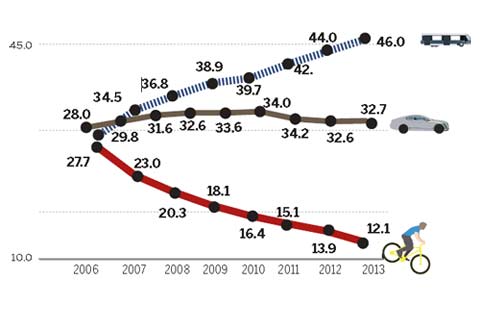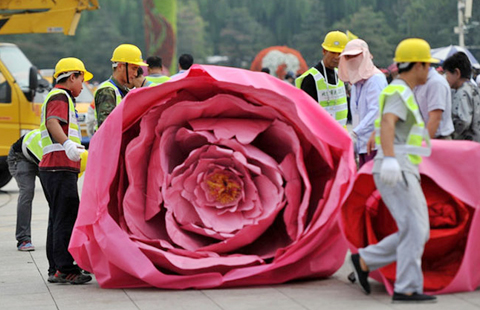It's back to China's urban future
Updated: 2014-09-19 07:41
By Benjy Ward(China Daily Europe)
|
|||||||||||
As the nation prepares to urbanize 300m in 30 years, it should draw inspiration from its past successes
For seven years I had the great fortune to work for the Gensler architectural firm in Shanghai as the regional design director of Asia. During my time there, I traveled extensively in China, exploring neighborhoods and interacting with the people who live in them. Through these travels I began to understand that a city's plan could begin to change the way people interact with each other and their surroundings.
A city's scale, its walkable neighborhoods, its support of heritage buildings and its celebration of open space are pivotal to its success.
In the spring of 2012 I was asked to speak at the Vertical Cities conference in Hong Kong. In preparation for the conversation and through my research, I began to realize the issues confronting China's cities were not only up in the air, but on the ground where we live, shop and interact everyday.
China is set to urbanize 300 million people in the next 30 years. Its codes and policies, although well-intentioned, need to evolve to keep up with China's rapidly changing economies and lifestyles. Now might be the perfect time to start exploring new guidelines to create sustainable cities. By looking at existing setback requirements, green space provisions, day-lighting laws and public access codes we can begin a rich dialogue about city planning.
Borrowing simple philosophies from Jane Jacobs, New Urbanism and LEED, we developed nine principles for sustainable cities in China. Using our current projects, we highlighted paths to improve communities and create healthier environments. Our approach was founded in contextually driven design. The nine principles are:
Create more and narrower roadways to connect neighborhoods;
Increase land use intensification and density on the ground;
Focus on adaptive reuse, urban infill and historical preservation;
Champion connected, "walkable" neighborhoods;
Encourage a mix of uses and design for demographic diversity;
Maintain the street edge;
Emphasize urban place making at multiple scales;
Preserve nature, open space and natural light;
Embrace multimodal public transport.
None of these alone are especially new theories on urban environments, but together they could begin to make existing policies more relevant to today's world.
Edward Glaeser says in his book Triumph of the City, "Cities are the absence of physical space between people and companies. They are proximity, density, closeness." This is the philosophy on which many of China's great cities were founded.
From the traditional, narrow alleys of hutong residential areas in Beijing to the winding neighborhoods of Kashgar, China has a rich history of creating highly complex and successful urban ecosystems. As the Chinese economy pushes on to become the largest in the world and lifestyles continue to shift, there is an opportunity to evolve planning policies that create cities that will sustain its people for centuries to come.
The author is principal with global architectural firm Gensler.
(China Daily European Weekly 09/19/2014 page7)
Today's Top News
'Yes' in Scotland could be 'maybe' for Chinese firms
Cooperation helps extradite fugitives
Xi, Modi set friendly tone for visit
Collector has 'proof' of atrocities
Naked newborn survives typhoon
How Alibaba IPO learnt from Facebook's mistake
Russia to beef up troops in Crimea
10 problems of Chinese society
Hot Topics
Lunar probe , China growth forecasts, Emission rules get tougher, China seen through 'colored lens', International board,
Editor's Picks

|

|

|

|

|

|





